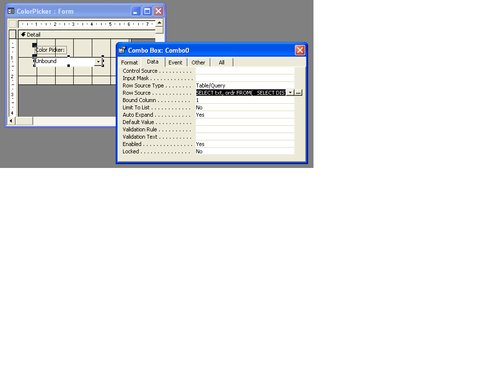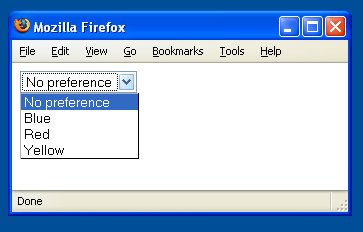Hack 63. Generate Rows Without Tables


You can use single-value SELECT statements to generate tables. You can use them when you need a small table for your query but you don't have permission to create tables in the database itself.
You can create a table by stacking together a bunch of one-row tables [Hack #62]. Here's a centigrade-to-Fahrenheit conversion that operates on a set of values summoned out of thin air:
mysql> SELECT x centigrade, x*9/5+32 fahrenheit -> FROM (SELECT 0 x UNION SELECT 10 UNION SELECT 20 -> UNION SELECT 30 UNION SELECT 40) t; +------------+------------+ | centigrade | fahrenheit | +------------+------------+ | 0 | 32.00 | | 10 | 50.00 | | 20 | 68.00 | | 30 | 86.00 | | 40 | 104.00 | +------------+------------+ 5 rows in set (0.00 sec)
Notice that you have to alias the x column in the first table of the UNION. The UNION will pick up the column headings given in the first table. Also notice that you must name the whole UNION t or your database will complain.
The equivalent works in Oracle but you must include FROM dual for each SELECT in the UNION:
SELECT x centigrade, x*9/5+32 fahrenheit FROM ( SELECT 0 x FROM dual UNION SELECT 10 FROM dual UNION SELECT 20 FROM dual UNION SELECT 30 FROM dual UNION SELECT 40 FROM dual) t
8.6.1. Hacking the Hack
You can populate some user interface controls, such as drop-down menus, from a table or query. You could use this, for example, to produce default menu entries in Access or to support a Perl script to generate a popup menu in HTML.
8.6.1.1. Combo box from a table in Access
In Access, you can specify the Row Source of a combo box as a fixed list of values or as a database query (see Figure 8-7). But sometimes you might want a bit of both of these. You might want the first option to be "No preference," for example, and the rest of them to be taken from a table. You can get exactly this by forming a UNION between the single fixed value and the table that contains the other options:
CREATE TABLE ColorTable
(colorName CHAR(32))
INSERT INTO ColorTable VALUES ('Red')
INSERT INTO ColorTable VALUES ('Blue')
INSERT INTO ColorTable VALUES ('Yellow')
Figure 8-7. The ColorPicker combo box

In this query, you get one occurrence of the string 'No Preference' plus one of each of the colors in colorTable. The phrase FROM colorTable is redundant in the first SELECT, but the Access parser insists on a FROM clause in a UNION or a nested query. In the first select of the UNION you could use any table that has at least one row in it:
SELECT DISTINCT 'No preference' FROM ColorTable UNION SELECT colorName FROM ColorTable
But how do you make sure that No Preference shows up first? You can't guarantee the order of the options, and you are not allowed to put an ORDER BY in the definition of a view. But you can make up another column specifically to dictate the ordering; having a NULL value in a constant row will ensure that it shows up as the first item. Here's an alternative that forces the ordering:
SELECT txt, ordr FROM( SELECT DISTINCT 'No preference' AS txt, NULL AS ordr FROM ColorTable UNION SELECT colorName, colorName FROM ColorTable) ORDER BY ordr;
Here is the output of the preceding statement:
+---------------+-------------+ | No preference | NULL | | Blue | Blue | | Red | Red | | Yellow | Yellow | +---------------+-------------+
You can go on to use the value that the user selects in a subsequent query. If the value selected from the drop down shows up as choice, you could use the phrase WHERE color LIKE COALESCE(choice,'%'), which gives the actual color (if one has been selected), or the wildcard otherwise. In Access you need to use the variation WHERE color LIKE Nz(choice, '*').
8.6.1.2. Pop-up list from a table in Perl
The SQL code generates a two-column result set. The second column is simply to force the order; you don't need it for the HTML. The selectcol_arrayref method from the DBI package is ideal for returning small lists of values. In this example, you can drop it directly into the CGI package function, popup_menu:
#!/usr/bin/perl
use CGI qw(:standard);
use DBI;
use strict;
print header;
my $dbh=DBI->connect('DBI:mysql:dbname','user','password');
my $sql = <<'xx';
SELECT DISTINCT 'No preference' AS colorName, NULL
UNION
SELECT colorName, colorName FROM colorTable
ORDER BY 2
xx
print popup_menu('menu_name',
$dbh->selectcol_arrayref($sql),
'No Preference');
Here is the same code in PHP:
";
while ($line = mysql_fetch_array($cursor,MYSQL_ASSOC)) {
echo "
" .$line{'colorName'} . "
"; } echo " "; mysql_close( ); ?>
Figure 8-8 shows what it looks like in Firefox.
Figure 8-8. HTML pop-up from a table

SQL Fundamentals
- SQL Fundamentals
- Hack 1. Run SQL from the Command Line
- Hack 2. Connect to SQL from a Program
- Hack 3. Perform Conditional INSERTs
- Hack 4. UPDATE the Database
- Hack 5. Solve a Crossword Puzzle Using SQL
- Hack 6. Dont Perform the Same Calculation Over and Over
Joins, Unions, and Views
- Joins, Unions, and Views
- Hack 7. Modify a Schema Without Breaking Existing Queries
- Hack 8. Filter Rows and Columns
- Hack 9. Filter on Indexed Columns
- Hack 10. Convert Subqueries to JOINs
- Hack 11. Convert Aggregate Subqueries to JOINs
- Hack 12. Simplify Complicated Updates
- Hack 13. Choose the Right Join Style for Your Relationships
- Hack 14. Generate Combinations
Text Handling
- Text Handling
- Hack 15. Search for Keywords Without LIKE
- Hack 16. Search for a String Across Columns
- Hack 17. Solve Anagrams
- Hack 18. Sort Your Email
Date Handling
- Date Handling
- Hack 19. Convert Strings to Dates
- Hack 20. Uncover Trends in Your Data
- Hack 21. Report on Any Date Criteria
- Hack 22. Generate Quarterly Reports
- Hack 23. Second Tuesday of the Month
Number Crunching
- Number Crunching
- Hack 24. Multiply Across a Result Set
- Hack 25. Keep a Running Total
- Hack 26. Include the Rows Your JOIN Forgot
- Hack 27. Identify Overlapping Ranges
- Hack 28. Avoid Dividing by Zero
- Hack 29. Other Ways to COUNT
- Hack 30. Calculate the Maximum of Two Fields
- Hack 31. Disaggregate a COUNT
- Hack 32. Cope with Rounding Errors
- Hack 33. Get Values and Subtotals in One Shot
- Hack 34. Calculate the Median
- Hack 35. Tally Results into a Chart
- Hack 36. Calculate the Distance Between GPS Locations
- Hack 37. Reconcile Invoices and Remittances
- Hack 38. Find Transposition Errors
- Hack 39. Apply a Progressive Tax
- Hack 40. Calculate Rank
Online Applications
- Online Applications
- Hack 41. Copy Web Pages into a Table
- Hack 42. Present Data Graphically Using SVG
- Hack 43. Add Navigation Features to Web Applications
- Hack 44. Tunnel into MySQL from Microsoft Access
- Hack 45. Process Web Server Logs
- Hack 46. Store Images in a Database
- Hack 47. Exploit an SQL Injection Vulnerability
- Hack 48. Prevent an SQL Injection Attack
Organizing Data
- Organizing Data
- Hack 49. Keep Track of Infrequently Changing Values
- Hack 50. Combine Tables Containing Different Data
- Hack 51. Display Rows As Columns
- Hack 52. Display Columns As Rows
- Hack 53. Clean Inconsistent Records
- Hack 54. Denormalize Your Tables
- Hack 55. Import Someone Elses Data
- Hack 56. Play Matchmaker
- Hack 57. Generate Unique Sequential Numbers
Storing Small Amounts of Data
- Storing Small Amounts of Data
- Hack 58. Store Parameters in the Database
- Hack 59. Define Personalized Parameters
- Hack 60. Create a List of Personalized Parameters
- Hack 61. Set Security Based on Rows
- Hack 62. Issue Queries Without Using a Table
- Hack 63. Generate Rows Without Tables
Locking and Performance
- Locking and Performance
- Hack 64. Determine Your Isolation Level
- Hack 65. Use Pessimistic Locking
- Hack 66. Use Optimistic Locking
- Hack 67. Lock Implicitly Within Transactions
- Hack 68. Cope with Unexpected Redo
- Hack 69. Execute Functions in the Database
- Hack 70. Combine Your Queries
- Hack 71. Extract Lots of Rows
- Hack 72. Extract a Subset of the Results
- Hack 73. Mix File and Database Storage
- Hack 74. Compare and Synchronize Tables
- Hack 75. Minimize Bandwidth in One-to-Many Joins
- Hack 76. Compress to Avoid LOBs
Reporting
- Reporting
- Hack 77. Fill in Missing Values in a Pivot Table
- Hack 78. Break It Down by Range
- Hack 79. Identify Updates Uniquely
- Hack 80. Play Six Degrees of Kevin Bacon
- Hack 81. Build Decision Tables
- Hack 82. Generate Sequential or Missing Data
- Hack 83. Find the Top n in Each Group
- Hack 84. Store Comma-Delimited Lists in a Column
- Hack 85. Traverse a Simple Tree
- Hack 86. Set Up Queuing in the Database
- Hack 87. Generate a Calendar
- Hack 88. Test Two Values from a Subquery
- Hack 89. Choose Any Three of Five
Users and Administration
- Users and Administration
- Hack 90. Implement Application-Level Accounts
- Hack 91. Export and Import Table Definitions
- Hack 92. Deploy Applications
- Hack 93. Auto-Create Database Users
- Hack 94. Create Users and Administrators
- Hack 95. Issue Automatic Updates
- Hack 96. Create an Audit Trail
Wider Access
- Wider Access
- Sharing Data Across the Internet
- Hack 97. Allow an Anonymous Account
- Hack 98. Find and Stop Long-Running Queries
- Hack 99. Dont Run Out of Disk Space
- Hack 100. Run SQL from a Web Page
Index
EAN: 2147483647
Pages: 147
